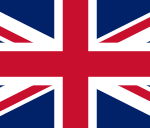As a frequent private jet traveler, you are likely aware of the risks and restrictions involved with private jet cards. These prepaid flight hour programs may seem convenient on the surface, but hidden fees, rigid terms, and financial instability can quickly erode their value.
When you want guaranteed availability, pricing transparency, and maximum flexibility, private charter programs are often the smarter choice. With a Haute Jets, you can fly exactly when and where you want without locking up hundreds of thousands of dollars or agreeing to restrictive terms.
While jet cards come with murky rate calculations and surprise fees, charter programs allow you to pay only for the time flown at a mutually agreed upon hourly rate. You avoid the frustration of losing prepaid hours to blackout dates, daily minimums, and expiration.
Most importantly, leading charter operators have a proven history of financial strength, so you never have to worry about unused flight credits disappearing.
As an experienced private jet traveler, you understand the importance of flexibility and service. Charter programs give you control over every aspect of your flight, allowing you to enjoy the convenience of private aviation without the drawbacks of a jet card.
Private Jet Cards Have Hidden Risks
Fees Can Add Up Quickly
While jet cards advertise fixed hourly rates, there are many additional fees to be aware of. Non-preferred FBO fees, repositioning fees, and minimum daily charges are common.
If a flight only takes 50 minutes but has a two-hour minimum, customers pay the difference. Holidays and peak travel also often come with 5-10% surcharges. These extra fees erode the value of pre-purchased hours.
Hours Expire
Most jet cards have expiration dates, typically within 12 to 36 months. Any unused hours are lost, and customers must re-deposit to continue service. In contrast, charter customers only pay for what they use, with no unused balances or expiring funds.
Restrictions Apply
Jet cards come with restrictions like minimum stays, advance booking requirements, and aircraft type limitations. While the specifics differ between providers, customers give up flexibility for the perceived convenience of a jet card. Charter clients have full control to book any aircraft that suits their needs.
There Are Risks
As seen with the JetSuite bankruptcy, there are risks to putting down large deposits for future travel. If a company faces financial trouble, prepaid balances could be lost.
Chartering through a reputable provider, on the other hand, has no upfront costs or deposits at risk. Customers simply pay market rates for each trip as needed.
Transparency Is Lacking
The fixed hourly rates advertised by jet cards often have premiums built in for risks, repositioning, and profits. Charter pricing is transparent, with customers paying the true market value of each flight. There are no opaque risk premiums or repositioning fees folded into inflated hourly rates.
Charter clients know exactly what they are paying for. In summary, while jet cards aim to provide convenience and lower rates, significant drawbacks exist.
Hidden fees, expiring funds, restrictions, risks, and lack of transparency are all reasons charter programs may be better options for private air travel. Conducting thorough due diligence on any provider is key to understanding the total costs and limitations involved with either service.
Jet Cards Are Not Necessarily Cheaper Than on-Demand Charters
While jet cards advertise fixed hourly rates and bulk discounts, customers often end up paying hidden fees and premiums that negate any savings. Charter customers, on the other hand, pay only for the specific aircraft and flight time needed at fair market value.
Be Aware of Financial Risk Premiums
When you purchase a jet card, the provider is taking on the risk of ensuring aircraft availability for your flights. They account for this risk by building premiums into the hourly rates, often 10-15% higher than charter market rates.
These premiums pad the provider’s bottom line in case flights are underutilized. As a charter customer, you only pay for what you use.
Watch Out for Expiration Dates and Minimums
Jet card hours typically expire within 12 to 36 months. Any unused hours are forfeited, even though you already paid for them upfront. Most jet cards also have minimum daily flight time requirements, usually 2 to 4 hours. If your flight is shorter, you still pay the minimum. With on-demand charters, you only pay for your actual flight time.
Be Prepared for Peak Season Surcharges
During high-demand seasons and holidays, most jet card providers implement “peak day” surcharges of 5-10% on top of your contracted rates. As a charter customer, you pay the market rate for that specific day. While the rate may be slightly higher during peak days, there are no surprise surcharges.
Don’t Forget the Fine Print
Jet cards often come with an array of fees hidden in the fine print like fuel surcharges, catering fees, and taxi time charges. While some fees are standard, charter providers are more transparent about additional costs. Always read the fine print of any jet card agreement to understand the total fees and restrictions.
In summary, jet cards are not always the most budget-friendly or transparent option for private jet travel. Chartering on-demand provides customized solutions for each trip and avoids many of the hidden costs and risks associated with jet cards.
For frequent fliers looking to reduce hassles, jet cards may still make sense, but go in with your eyes open to the potential downsides relative to charter.
Read the Fine Print on Jet Card Contracts
Hidden Fees Abound
Jet card providers frequently impose undisclosed surcharges and fees that significantly impact the total cost of flights. Fuel surcharges, security fees, airport charges, and repositioning fees are commonly excluded from the advertised hourly rate, often amounting to hundreds of dollars per flight.
Cancellation fees equal to the full flight cost are also widespread if a trip needs to be cancelled. These hidden costs can drastically reduce the value provided by a jet card program.
Expiration Policies Vary
Unused flight hours may expire within 12 to 36 months, resulting in wasted funds if hours go unused. Some programs offer rollover of unused hours for an additional fee, but hours are rarely refundable. Understanding a program’s expiration policy is important to avoid losing money on prepaid hours. Frequent flyers may prefer programs with longer expiration windows or rollover options.
Minimum Flight Times Apply
Most jet card providers enforce minimum daily flight times, typically 1 to 2 hours. Flights under the minimum incur additional charges to meet the minimum, even if the aircraft is only needed for a shorter period. For example, a 50-minute flight may be billed at the 2-hour minimum rate.
These minimums significantly impact pricing for short flights and frequent flyers. Programs with shorter minimums, or that charge in 15-minute increments, typically offer better value for certain usage patterns.
Seasonal and Location Surcharges Common
Higher demand during holidays and winter months often triggers peak day surcharges of 5-10% on hourly rates. Flights into or out of certain locations may also incur additional surcharges. These variable charges are not always clearly disclosed upfront but can amount to thousands of dollars in additional fees each year.
Comparing how different programs handle surcharges and peak demand is important for accurate cost estimation and finding the most cost-effective solution. In summary, while jet cards aim to simplify private air travel at lower upfront cost, many programs remain opaque on the total fees charged and contain restrictions that reduce flexibility.
Performing thorough due diligence on the fine print of any jet card contract is critical to understanding the total cost of flights and avoiding unexpected charges. Evaluating programs based on transparency and policies that match your specific needs helps identify those that offer the greatest value and flexibility.
Private Charter Programs Offer Flexibility

Private jet charter provides a level of flexibility and customization unrivaled by jet cards.
No Upfront Deposits
Unlike jet cards which require substantial upfront deposits, charter customers pay as they fly. This allows for greater flexibility in travel schedules without the risk of losing prepaid flight hours. Charters can be booked on shorter notice, for any aircraft needed.
Tailored to Your Needs Charter brokers work directly with operators to source the right aircraft for each trip. If a larger aircraft is needed for extra baggage or more passengers, the broker can easily make accommodations. They are not limited to the aircraft affiliated with a particular jet card.
A La Carte Pricing
Haute Jets pricing is quoted on a per trip basis, tailored to the specifics of your itinerary. You only pay for the aircraft you need, without subsidizing positioning flights or peak season surcharges. While hourly rates may be comparable or even lower than jet cards, the total cost of a charter trip is often less since you are not paying for unused hours or minimum daily requirements.
Fewer Restrictions
Haute Jets customers are not subject to the various fees and stipulations common to jet cards like daily minimums, peak day surcharges, and expiration dates. Lead times are also typically shorter for charters, allowing for more spontaneous getaways.
We provide the freedom to visit a wider range of airports since they are not limited to the FBO networks affiliated with a particular jet card provider. In summary, Haute Jets offers significant benefits over jet cards for those looking for a highly customized travel experience.
By working with Haute Jets, customers gain access to a wider range of aircraft at competitive, transparent rates without the financial risks and restrictions imposed by jet cards. For frequent fliers, the flexibility and a la carte pricing of charter travel may unlock greater value and an enhanced private aviation experience.
How Do Jet Cards Work?
Jet card programs allow customers to prepay for flight hours on private jets. For an upfront deposit, typically ranging from $100,000 to $500,000, customers can purchase a set amount of hours to be used within a fixed period, usually 12 to 36 months.
While jet cards aim to provide lower hourly rates and convenience, customers should understand the risks and hidden fees involved before purchasing a jet card.
Upfront Risk
When purchasing a jet card, customers are essentially lending the jet card company money in exchange for promised flight hours. However, if the company declares bankruptcy, customers can lose their entire deposit and prepaid hours.
This occurred in early 2020 when JetSuite, a private jet card issuer, filed for Chapter 11 bankruptcy protection, resulting in over $50 million in losses for jet card holders. Chartering flights on a pay-as-you-fly basis avoids this risk, as customers only pay for the specific flights they take.
Hidden Fees and Restrictions
Jet cards often come with various fees and restrictions that can diminish the value of purchased hours. Non-preferred FBO fees, repositioning fees, and minimum daily use requirements are common. For example, if a two-hour minimum flight time is required but the flight only lasts 50 minutes, customers must pay for the additional 70 minutes.
Fees also frequently apply for flying during peak seasons or on holidays. Furthermore, purchased hours typically expire within 12 to 36 months, and any unused hours are lost. Carefully reading the terms and conditions of any jet card agreement is critical to understanding the potential fees and limitations involved.
Not Always the Lowest Price
While jet cards aim to provide lower hourly rates by allowing customers to purchase hours in bulk, this is not always the case. The fixed rates advertised often include financial risk premiums and repositioning costs built into the price.
A reputable charter broker can frequently offer equal or better pricing without a large upfront deposit. Chartering flights as needed provides more transparency into the true market costs of each trip. For customers seeking maximum flexibility, lower risk, and transparent pricing, chartering private flights through a charter broker may be preferable to purchasing a jet card.
However, for those wanting guaranteed availability and fixed rates, jet cards can still provide an efficient solution, as long as customers go in with realistic expectations about potential fees and a full understanding of the risks involved.
Private Jet Card FAQ
How exactly do jet cards work?
Private jet cards operate by allowing customers to prepay for a fixed amount of flight time on a specific aircraft type at a predetermined hourly rate. The customer deposits funds upfront in exchange for flight credits to be used at a later date.
While seemingly convenient, jet cards can expose customers to financial risk should the operator file for bankruptcy or make major changes to their program. Customers may lose access to prepaid funds or see the value of remaining credits diminish.
Is a jet card cheaper than a charter?
Jet cards are not necessarily more affordable than chartering private flights. The fixed hourly rates advertised often have additional fees and cost premiums built in to account for the upfront cash deposit. Chartering flights on an as-needed basis provides pricing transparency so customers only pay for what they use. Market forces determine the charter rate for each trip.
Always read the fine print
Jet card terms and conditions vary but typically include restrictions, limitations and additional fees to be aware of. Non-preferred FBO fees, taxi time deductions, daily minimums, peak day surcharges, and expiration dates are common examples that can reduce the value of prepaid flight time. Hours purchased do not always equate to hours in the air.
What private charter programs can offer you?
Private charter programs provide an alternative to jet cards that avoids large upfront investments and unwanted surprises. Charter customers pay for each trip at the current market rate for the aircraft needed. No funds are at risk should the operator cease operations.
Charter programs can also provide greater flexibility in choosing aircraft types, operators and flight routes to best suit each trip. For frequent fliers, charter brokers may be able to negotiate lower rates by bundling multiple charters together.
In summary, private jet cards require significant upfront investment for future travel that may depreciate in value or become unavailable. Private charters charge for each flight as needed at fair market prices. For most private fliers, chartering is a more transparent option that avoids unwanted risk and restrictions.
Conclusion
At the end of the day, private jet cards come with inherent risks and restrictions that can end up costing you more than expected. Before committing your hard-earned money, be sure to read the fine print and consider if a charter membership program may better suit your private aviation needs.
Unlike jet cards, Haute Jets provide flexibility, transparency, and customization without large upfront deposits or expiration dates. Focus on finding an established charter operator with a proven track record of safety, reliability and exceptional service.
This approach reduces the risks associated with prepaid jet cards so you can fly freely and focus on getting to your destination quickly, seamlessly and safely.
Are you interested in finding an exact price for your upcoming trip? Input your trip details here to browse available private jet charter flights, or call +1 (888) 585-3095 for a custom itinerary and quote.

















































